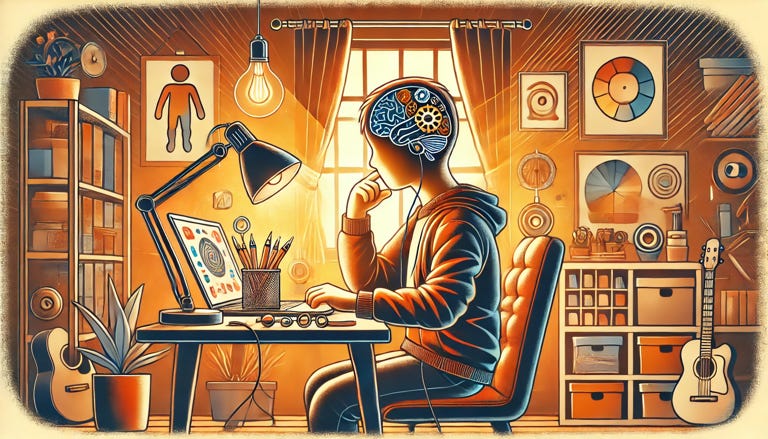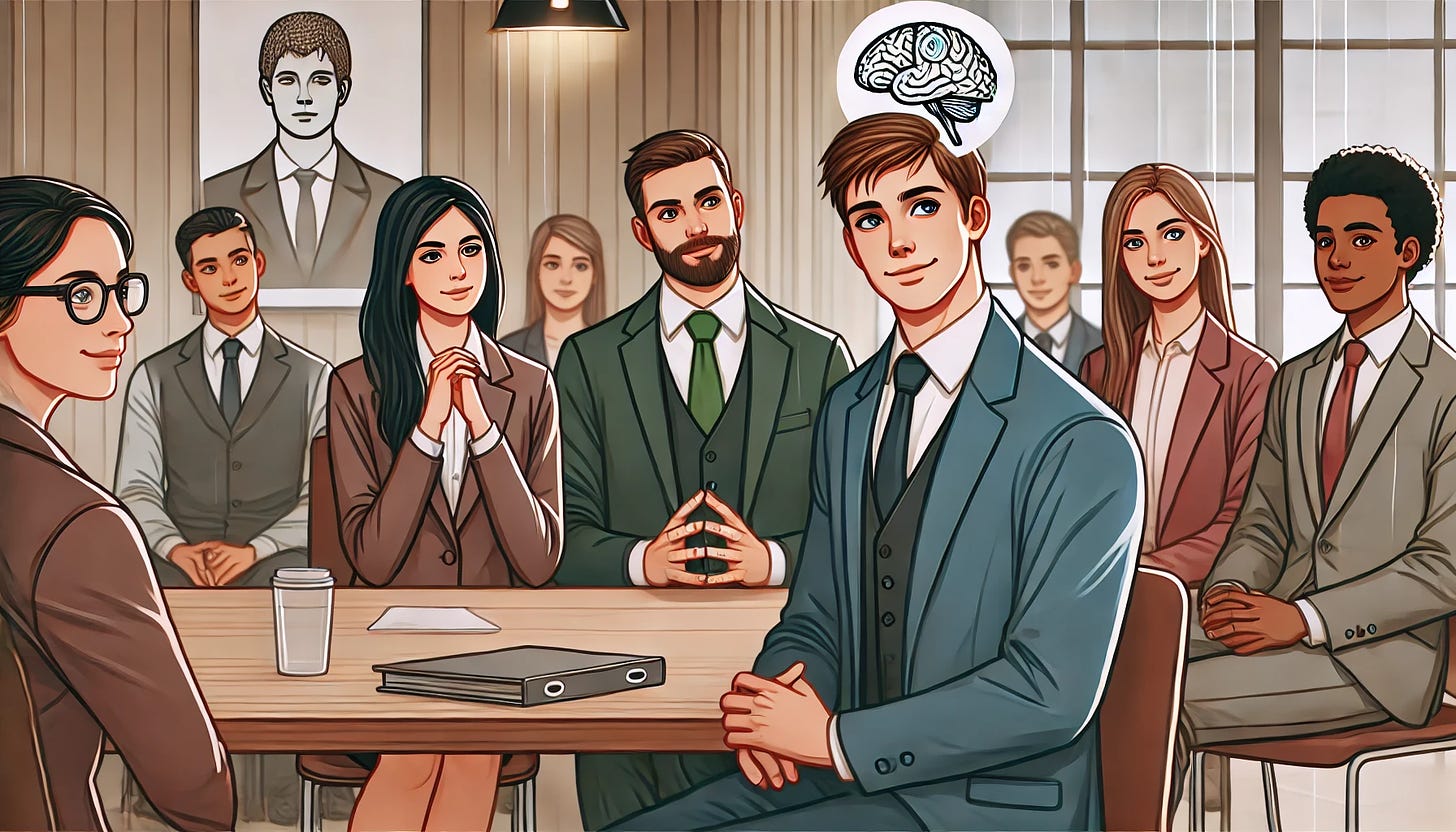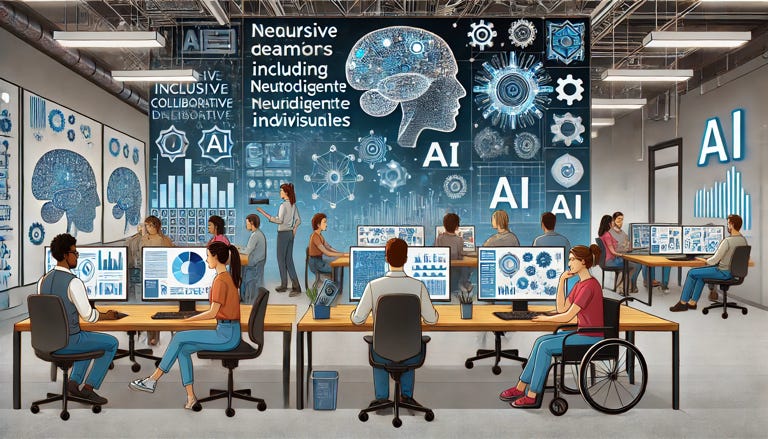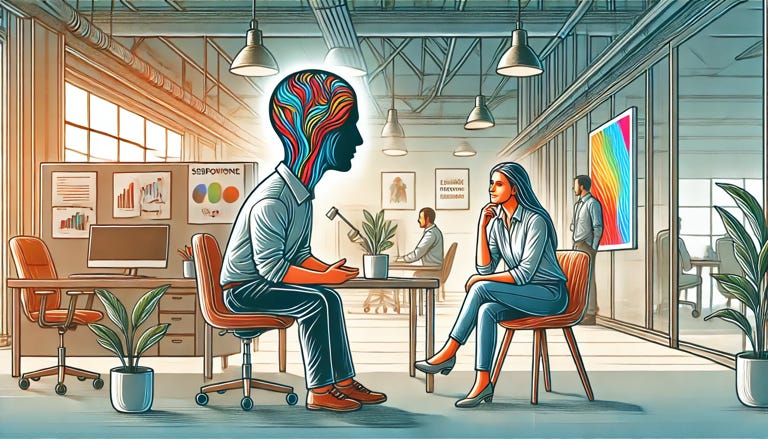Neurodivergence and Neurodiversity
The Challenge of Thriving in a Structured World—And Will AI Help Us?
NOTE: This week, “The Deliver Man” substack has a guest writer. Without sharing her identity, she is one of the most prominent executives in the world of banking and financial services and has led massive organizations around technology and innovation. Her unique international exposure allows for a comprehensive view on a topic becoming more and more relevant in the work place. Neurodiversity and how to embrace and lift up different ways to neuro-operate in solving complex problems or just operating daily at work. Brainstorming to a complete new level. And new doors are opening every day with the intersection of human behaviors and AI.
So without further due notice, here is the deeply personal story she wishes to share for this audience. And it fits wonderfully with my views on leadership, coaching and being different. So here is “the Delivery Woman”!
************************
Sitting at a bistro terrace on an autumn day, I find myself across from a longtime friend. She watches me curiously as I tell her about my coaching focused on neurodivergence. “So, what exactly is this coaching?” she asks, pressing me to elaborate. After a moment’s hesitation, I admit it’s a very specific coaching. “I’m a Highly Sensitive Person (HSP) and have High Intellectual Potential (HPI).” She looks a bit surprised, and share that she is also HPI and a mentalist. Suddenly, the atmosphere at 11 p.m. in a busy city district takes another turn; we’re sharing something deep, and it makes us stronger. We realize we’re not alone. This conversation brings me to a point of reflection. I realize it’s still challenging to talk about neurodivergence without fear of judgment or misunderstanding when it is truly neurodiversity.
Another moment, a little later, comes to mind. This time, I’m on a complete different continent, dining with a close friend. As I share my journey with neurodiversity, he confides that one of his children is bipolar. “It’s not easy to manage,” he says, visibly worried about his child’s future. Immediately, I feel a sort of categorization happening. I don’t know how to explain to him that my neurodiversity is different, that it manifests as hypersensitivity, a “star-shaped” way of thinking—not through the same struggles as his child. I sit there, a bit unsettled, realizing that discussing these topics is far more complex than I had imagined. Although our experiences differ, I understand that neurodivergent individuals all face unique challenges that may not be easily conveyed.
In Europe, this complexity is especially pronounced. I think of a CEO I know, a brilliant woman, also neurodiverse, who tried to raise funds for a visionary project. But it didn’t work. European investors couldn’t grasp her vision, as it was too forward-thinking for them. We talked about the way people likely perceived her, and she sighed, “To me, we’re all shaped differently.” I could sense her frustration, but she fully embraced who she is. I advised her to go to the United States, to Silicon Valley, where audacity and originality are more highly valued. In Europe, neurodiversity is still seen as an obstacle, almost a pathology (an amalgam with psychological neurodivergence), whereas, to me, it’s a strength, a unique asset that can bring fresh vision and value to a company.
Throughout my career, I’ve met many neurodiversed talents, particularly in tech, AI, and data teams. I think of an Asperger colleague, brilliant and dedicated, who always produced impressive work. But one day, he entered my office, on the verge of breaking down. “I can’t take it anymore,” he told me. “I’ll have to resign or… I just can’t hold on.” His words were heavy—a cry for help. He shared his neurodiversity late, though we all get an hint by seeing how he was operating but I had no clue how to engage him on it. How and when should one discuss this with colleagues? I advised him to go home, rest, and do nothing for the time being. This situation was a wake-up call, showing me just how rigid and standardized current work structures are, failing to consider the specific needs of these unique talents. We can demand excellence, but we also have to be able to integrate their limits in a safe space.
I also remember a brilliant, dyslexic colleague, openly neurodiverse. He was both inspiring and complex. His manager and I often discussed the best ways to help him flourish. He was talented, but certain tasks, like writing presentations, required much more effort from him than from his colleagues. With today’s large language models (LLMs), he could have thrived. I wish these tools had been available to him, as they would have been a precious ally, allowing him to focus on his strengths without being held back by tasks that drained his energy.
Another memory surfaces—of a peer who openly shared his bipolarity a few years back on our company’s internal blog. He wrote, “One day, I’ll walk into a store and buy a car feeling super happy, with no need for it, and the next day it’s the complete opposite.” Managing this at home and at work was no easy task. What courage he had to share this, especially in the early 2010s.
I think of a friend, a brilliant investor, who told me she was bullied at school for her neurodiversity and chose to put her kids outside the traditional educational system to foster their self-confidence.
The story of a company like DeepMind also comes to mind. It’s a company built on atypical talents, “out-of-the-box” thinkers who have solved some of AI’s biggest challenges, including developing AlphaGo and achieving remarkable scientific milestones. Yet, since being integrated into Google, I wonder if this more traditional structure will be able to respect and value the neurodiversity of its employees. When moving from an innovative organization to an Ads-based corporate setting, with rigid rules, will this stifle the very minds that helped DeepMind excel? This situation highlights how often rigid structures prevent neurodivergent individuals from fully thriving.
This thought brings me back to a challenging moment in my own career. I see myself in an interview with an HR director—a woman whose worldview is structured, square. She watches me, perplexed, as I try to explain my “star-shaped” way of thinking, this ability to capture insights almost instantly. She doesn’t understand—perhaps doesn’t want to. By the end of the interview, I realize that, despite my perfect business fit for the role, she will tell me I’m no fit with the company’s culture. Let’s call it like it is: she’s uneasy about seeing stars in her squares. It’s a shame for a global tech player that champions diversity and whose CEO is likely neurodiversed himself. It’s disconcerting to see how even high-level professionals struggle to accept this difference.
I often come back to these moments, seeking to understand how to transform these misunderstandings into bridges toward greater inclusion. I think of the atypical talents I’ve encountered, these brilliant and creative minds that would flourish in a supportive work environment. For me, it’s time to train managers in this cognitive diversity, helping them see that these unique profiles are assets for innovation and performance.
Today, most investment is directed toward AI and tech, as this fuels our economy and reflects US-led growth. But I believe this will shift because tools and AI alone aren’t enough; it’s about adoption. This technology will force us to reinvent the way we educate, work, and live. So, now more than ever, there’s never been a better time to channel investment into managing neurodiversity and turning it into a driving force for change.








